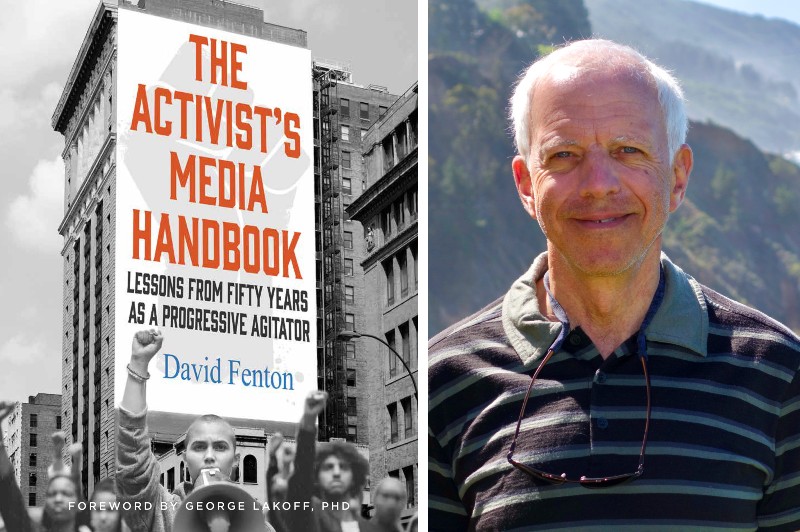A modern Marion takes the lead in U-M’s "The Heart of Robin Hood"

The legend of Robin Hood has been told for centuries. In the usual version, he is a nobleman who has been forced from his estate. He gathers a band of “merry men” who are dedicated to robbing from the rich and giving to the desperately poor.
But in earlier versions of the story, told in verse and song, Robin robbed from the poor but didn’t give to the rich and didn’t have noble aspirations. Playwright David Farr has returned to that earlier version of Robin Hood and to a very different Maid Marion, who challenges the outlaw to be a better man.
The University of Michigan Department of Theatre and Drama will present Farr’s The Heart of Robin Hood at the Power Center for the Arts, December 8-11.
Director Geoff Packard said that Farr takes a decidedly different view of Robin Hood and his Merry Men.
In Real Time: Chickenwire Canöe’s rock-opera concept album “Joey Wendt” tells the tale of a budding conspiracy theorist during the pandemic

Brian Delaney admires how Gordon Lightfoot documented the 1975 sinking of the SS Edmund Fitzgerald in Lake Superior.
The Chickenwire Canöe guitarist applauds the Canadian folk singer-songwriter with respectfully recounting the tragedy and remembering the 29 lives lost in his 1976 hit, “The Wreck of the Edmund Fitzgerald.”
“For somebody like Gordon Lightfoot to be able to write that story to song in a way that didn’t capitalize on somebody else’s calamity, that’s always stuck with me. That’s art in the moment … you’re looking at a situation and documenting it,” said Delaney, who’s from Dexter.
“When I thought about that calamity and then thought about the pandemic, I knew it would be a real crime not to have somebody document it in a somewhat well-rounded way.”
By summer 2020, he landed on a pandemic-themed album and contacted childhood friend Mike Gentry, now Chickenwire Canöe’s vocalist-guitarist.
“I just sat down and wrote a proposal to Mike, and I briefly outlined with bullet points what it could be as a concept,” Delaney said.
“The concept was a record of vignettes of what we were going through related to the pandemic. Some of the best art will take you back to a moment in time where you’re like, ‘This could have only happened then.’”
U-M Gilbert and Sullivan Society celebrates its 75th anniversary with pirates, policemen, and paleontologists

With cat-like tread, a rollicking band of pirates will step upon the stage from December 8-11 as they have done about every four years since 1949 when the two-year-old University of Michigan Gilbert and Sullivan Society (UMGASS) gave its first performance of The Pirates of Penzance.
Sparkling tunes and lyrics replete with irony, wit, conflict, and romance make it no surprise that UMGASS would celebrate its 75th anniversary with a production of Gilbert & Sullivan’s two-act comic operetta. Director David Andrews says, “It’s probably the best known and best loved of Gilbert and Sullivan’s pieces.” Andrews says the show doesn’t just have catchy melodies that people hum on the way out: “Some people are humming on the way in,” he says of the well-known show.
Immersion Therapy: Hannah Baiardi Unpacks Emotions on “Ascend Your Vibe: Music for Contemplation” Piano Instrumental Album

Hannah Baiardi immerses herself in a cathartic sonic experience on her new album, Ascend Your Vibe: Music for Contemplation.
The Ann Arbor singer-songwriter and pianist delved into jazzy sophisti-pop on her last two records, Magic (2022) and Straight From the Soul (2021), but Ascend Your Vibe explores the restorative side of mellow instrumental music.
“I brought all my emotions to the piano bench and got to unpack them in real-time at the keys,” said Baiardi about her fourth album. “The longer strings of phrases are riding a feeling while the pauses are the reflection and the process. The feelings drive the ebb and flow and unfolding of each piece.”
Throughout Ascend Your Vibe: Music for Contemplation, Baiardi unfolds feelings of hope, gratitude, and wonder across eight spiritual tracks, including the magical opener, “Pensive,” and the otherworldly “Somewhere East of Here.” Glistening keys slowly strike and pause alongside tranquil samples featuring soothing birds and a ticking clock.
“As a listener, you can choose where to direct your attention. The clock can ground or distract you,” writes Baiardi on her Bandcamp page. “The anticipation before a chord can make you focus on the next chord or can help you be in the in-between spaces.”
To get inside her headspace, we recently talked with Baiardi about her musical beginnings, favorite artists, and latest album.
David Fenton's "The Activist’s Media Handbook" traces his life in the media, from the "Ann Arbor Sun" to progressive public relations

Activist and public relations firm founder David Fenton launched his very first PR campaign in Ann Arbor in 1971: Fenton worked to get John Sinclair out of prison where he was serving a sentence for giving drugs to an undercover agent.
Following this effort, Fenton wrote for the countercultural newspaper Ann Arbor Sun where he worked on a campaign to increase sales by running a contest called “Win a Pound of Colombian Marijuana.”
Fenton’s new book, The Activist’s Media Handbook: Lessons From 50 Years As a Progressive Agitator, spends two chapters on his time in A2 and also details what happened before and after.
Of his time working at the newspaper and in activism, Fenton writes:
U-M's production of the musical tragedy "Bernarda Alba" mixes period costumes and an abstract set to confront contemporary issues facing women

Fredrico Garcia Lorca wrote The House of Bernarda Alba in 1936, shortly before he was murdered by a nationalist firing squad during the Spanish Civil War. Michael John LaChiusa shortened the title to Bernarda Alba when he set the play to music and added lyrics; he made some changes to the play while keeping the essential story:
Bernarda Alba assumes the role of family head after her husband’s funeral. She orders her five unmarried daughters, ages 20-39, to mourn for eight years, as her mother did before her. It will be as though the house is bricked up; even crying is forbidden. One problem is that three of the sisters are enamored with the handsome Pepe el Romano—the eldest is engaged to him—and jealousy takes center stage. But what exactly can the sisters do under the circumstances? Turns out, some life-altering things.
When the musical tragedy opened at Lincoln Center in New York in 2006, the scenic design was drab, a realistic depiction of this closed and lonely home.
For Linda Goodrich's production of LaChiusa's Bernarda Alba adaptation that's running November 10-13 at the University of Michigan, scenic designer Jungah Han dropped the drab for what Goodrich calls a “wildly inventive” set. The stark red floor is bordered by a black playing area, with a kind of ceiling that descends to oppress the characters. Actors step out of character and onto the rim at times to witness the action or to narrate.
Folk Tales: Bill Edwards Channels Different Characters on “Thirteen Stories” Album

Bill Edwards prefers to keep his songwriting in perspective—though not necessarily his own.
The Ann Arbor singer-songwriter and multi-instrumentalist pens sentimental narratives from different viewpoints on his new Americana album, Thirteen Stories.
“Sometimes [people] listen to or see a singer, and they assume the song you’re singing is from your own perspective. It doesn’t always have to be; that’s very limiting I find,” Edwards said.
“You can use your imagination and sing from somebody else’s perspective. It’s all colored by my personal experience, and some of it’s very personal, but not all of it.”
Throughout Thirteen Stories, Edwards channels the mindset of a hall of fame baseball player, a seasoned songwriter, a nostalgic boater, a distraught wife, and other compelling characters.
“I want [listeners] to get outside themselves a little bit and experience emotion from somebody else’s point of view,” he said. “Can you identify with this even though it’s not necessarily my point of view or their point of view? Do the songs communicate well enough what somebody else might be going through?”
Everything’s All Right: Jonathan Crayne Finds the Way Forward on “Oknow” EP

Jonathan Crayne’s debut EP is like a self-pep talk the Adrian alt-rocker wrote to tell himself every little thing’s going to be all right.
The six-song Oknow chronicles Crayne’s emotional resilience and personal growth after experiencing previous challenges in life and love.
“I wanted it to be character pieces that depict going through different stages—whether it’s being a kid or trying to persevere—while ending things on a high note,” said Crayne, who’s also a guitar, bass, and percussion instructor at Ann Arbor’s School of Rock. “I write a lot of sad stuff, but I don’t want to leave anyone like that.”
He delivers on that promise across Oknow’s six insightful tracks, starting with the hopeful opener, “The Good Kids.” Alongside contemplative electric guitar, Crayne sings, “I think I finally found the meaning / Now it’s time to tell yourself / This will not end!”
To further explore his optimistic mindset, we recently chatted with Crayne about his musical journey and latest EP.
Deep Dive: Kim Fairley's new memoir recalls how she grew up “Swimming for My Life”

Swimming was not just swimming for Ann Arbor author and visual artist Kim Fairley.
The sport was layered with physical challenges, abuse from coaches, and family expectations that exceeded what was reasonable, all of which she depicts in her new memoir, Swimming for My Life.
At the start of her book, Fairley shares an early, positive memory of swimming at the beach where she struggled in the waves and remembers, “The ocean reverberated in my head, but when I glanced up at Dad, I saw his pride: my daughter, my oldest.” Following that experience, Fairley’s parents encouraged her to join a swim team in third grade in Cincinnati where she grew up. While Fairley did not immediately love swimming even back then, her attempts to stop were not heard even though she tried to tell her father:
Shakespeare's "Much Ado About Nothing" gets a contemporary update with new music at Ann Arbor Civic Theatre

"Therefore play, music."
—Benedick, Much Ado About Nothing
It’s become customary for directors to find ways to make Shakespeare more accessible.
When director David Widmayer proposed the Bard’s Much Ado About Nothing as the play to welcome audiences back to the Ann Arbor Civic Theatre, he embraced Benedick’s call for music.
“My original pitch was to replace the violence in the show with the metaphorical violence of a battle of the bands,” he said.
That proposal was turned down, but music remained a key element for the production, including some cast members creating original compositions for Shakespeare’s verse.
Widmayer has performed in several Shakespeare productions at the Ann Arbor Civic Theatre. This is his second time directing a Shakespeare play.
“I was looking for something that basically we could have fun with and get the audience back into the theater,” Widmayer said.
In Widmayer’s reimagining of Much Ado, musicians and artists go off to war but when they return they lay down their arms to return to the arts. The time is now, but the titles and arrangements of Shakespeare’s world exist in this imaginary version of modern times.
“It’s a place where people can come and perform music and find joy in that art together,” Widmayer said.


































